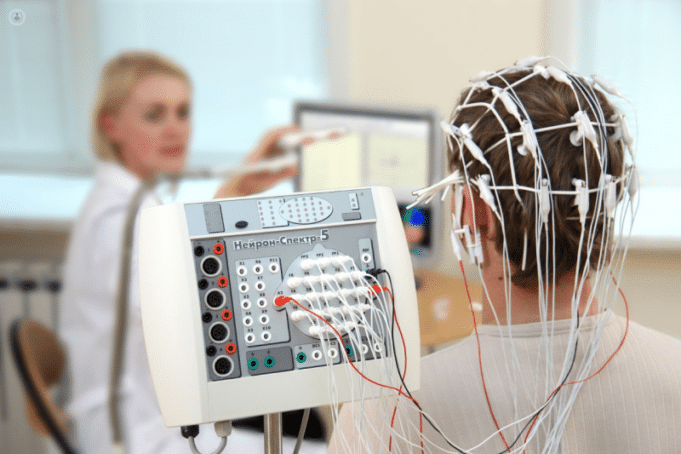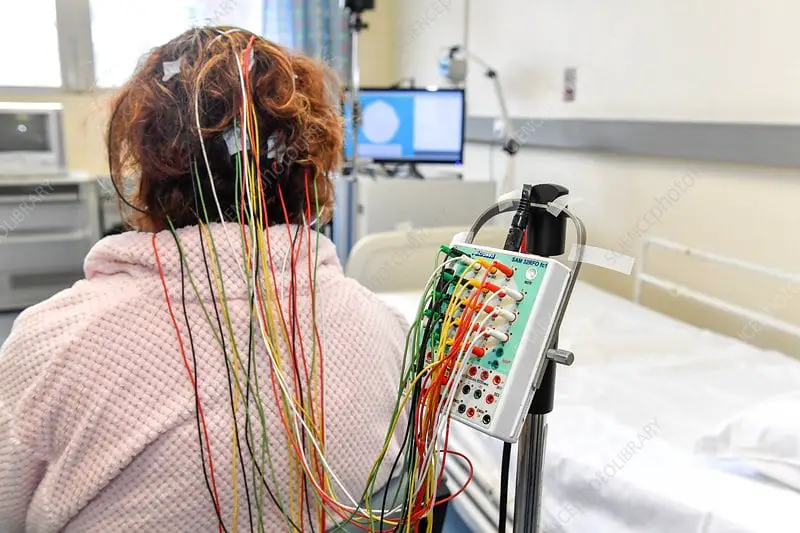Electroencephalography also known as Electroencephalogram (EEG) is a noninvasive exam that records the oscillatory movements of electrical patterns in the brain.
This exam is carried out to aid in the diagnosis of conditions such as Seizures, Epilepsy, Brain tumor, Insomnia and other somatic problems (Sleep problems), Injuries to the head, dizziness, headaches and migraines. It is also used to ascertain a brain death.
An EEG amplifies electrical patterns thereby helping to detect abnormal brain waves. The amplified charges appears as a graph on a computer screen or as a recording which can be printed as hard copy.
It appears as a wave pattern on a graph paper or computer screen. Your physician interprets the reading. The very first EEG recording was carried out by Hans Berger, A German psychiatrist in 1924.
Reasons For Performing An EEG
The EEG is used to detect and evaluate various brain disorders. In the presence of Epilepsy or Seizure, the brain activity will appear as rapid spiking waves on the computer screen.
It can also be used to determine the overall electrical activity of the brain.
It can also be used to monitor blood flow in the brain during surgical procedures.
The measurements given by an EEG are used to validate or cancel out various conditions which includes:
- Head injury which led to brain damage
- Alheizmer disease
- Schizophrenia (Violent psychosis)
- Stroke
- Sleep disorders (Somatic problems)
- Brain dysfunctional diseases (Encephalopathy)
- Brain tumor
- Encephalitis (brain inflammation)
- Dementia
- Seizure disorders (Epilepsy)
It is also used to help the physician know the right level of anesthesia for someone in medically induced coma.
Risk Of EEG
There are no risks or side effects with EEG. It is verifiably safe and painless. Although on rare occasions, EEG that includes light or other stimuli like breathers may trigger seizures in someone with Epilepsy or any other Seizure disorders.
The EEG technician is trained to safely bring the situation under control and safely manage the patient.
Forms Of EEG
An EEG is performed by connecting small electrodes and wires attached to the patient’s head. These electrodes detect the brain waves of the patient.
This is classified based on the way it’s conducted:
- Standard EEG: This type of EEG usually takes 2 to 3 hours both preparation and procedure which lasts about an hour. The patient may be asked to do a sleep deprived EEG by he’s or her physician. The patient is told to have only 4 hours of sleep. Abnormal brain waves may appear when the body is fatigued. The patient will be instructed by the physician in regards to food, drinks and medication that should be avoided.
- Ambulatory EEG: Here the patient is required to wear a portable EEG recorder on waist belt for days or weeks. A diary record is also kept by the patient in regards to drug dosages and daily activities to help the doctor relate the activities to specific EEG recordings.
- Video EEG: This is available in special centers for patients with sleep disorders or seizure disorders. The patient is monitored by both EEG and video camera in the hospital.
Preparation For An EEG
Wash your hair properly with shampoo but no conditioner before the EEG and don’t apply any hair product like sprays or gels in your hair on the day of the exam.
Consent form will be required of the patient to sign. Details of current or ongoing medications will be required by the physician.
Quit the use of medicine that may interfere with the EEG if recommended by your physician. Avoid consumption of any meal or drink that has caffeine for 8 to 12 hours before test.
Avoid fasting the night before or on the day of the procedure as low blood sugar would interfere with the result. Adhere to any directions given by your physician.
The Test Result
A neurologist or a specialist in brain and nervous system problems interprets your EEG. The physician will communicate to you with your referring doctor who will discuss the result with you.
We hope that you found this helpful. Kindly share your thoughts with us in the comments section.













